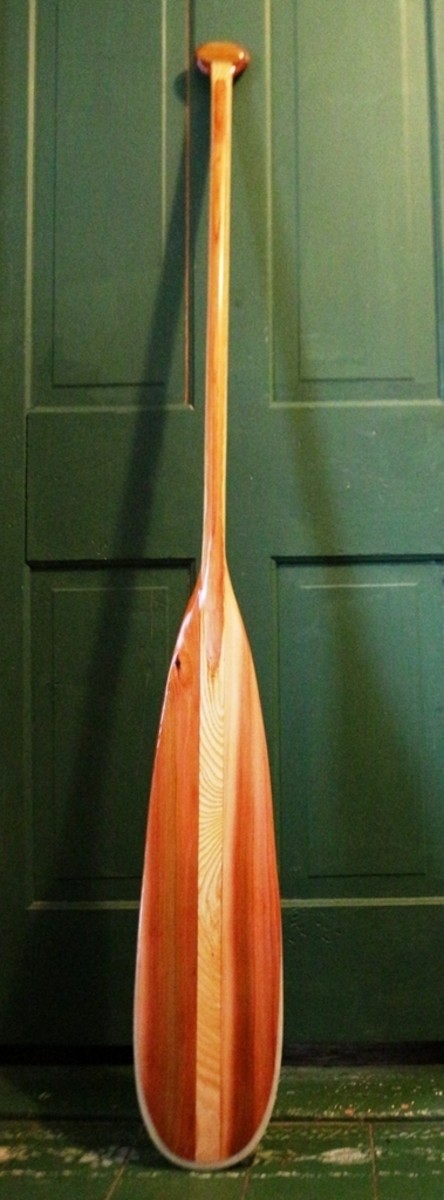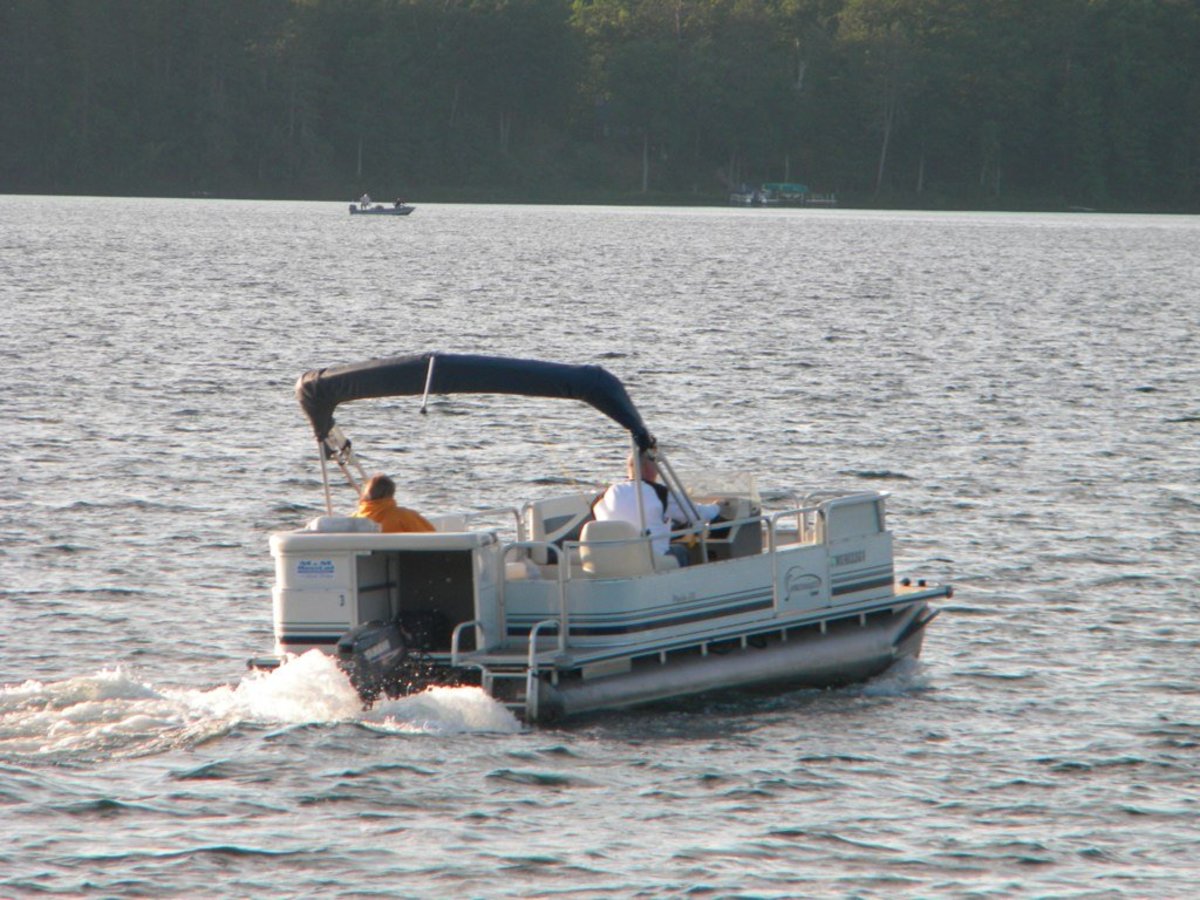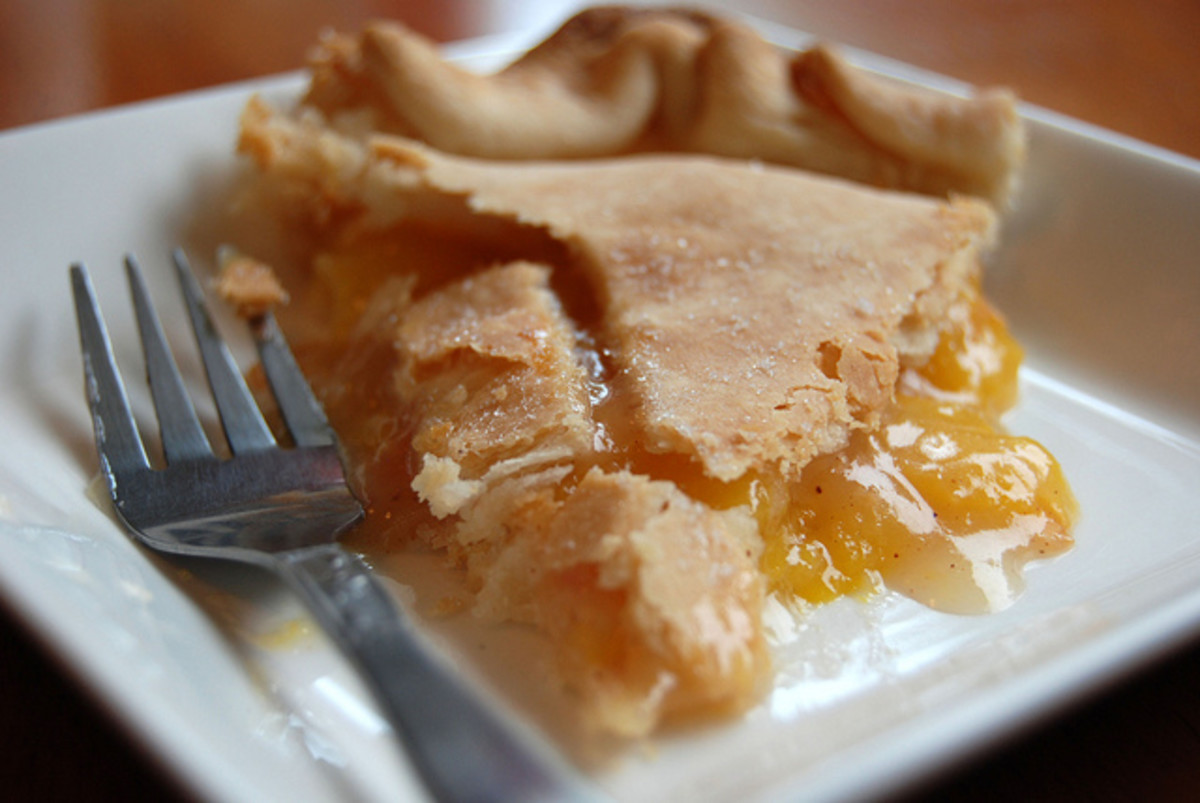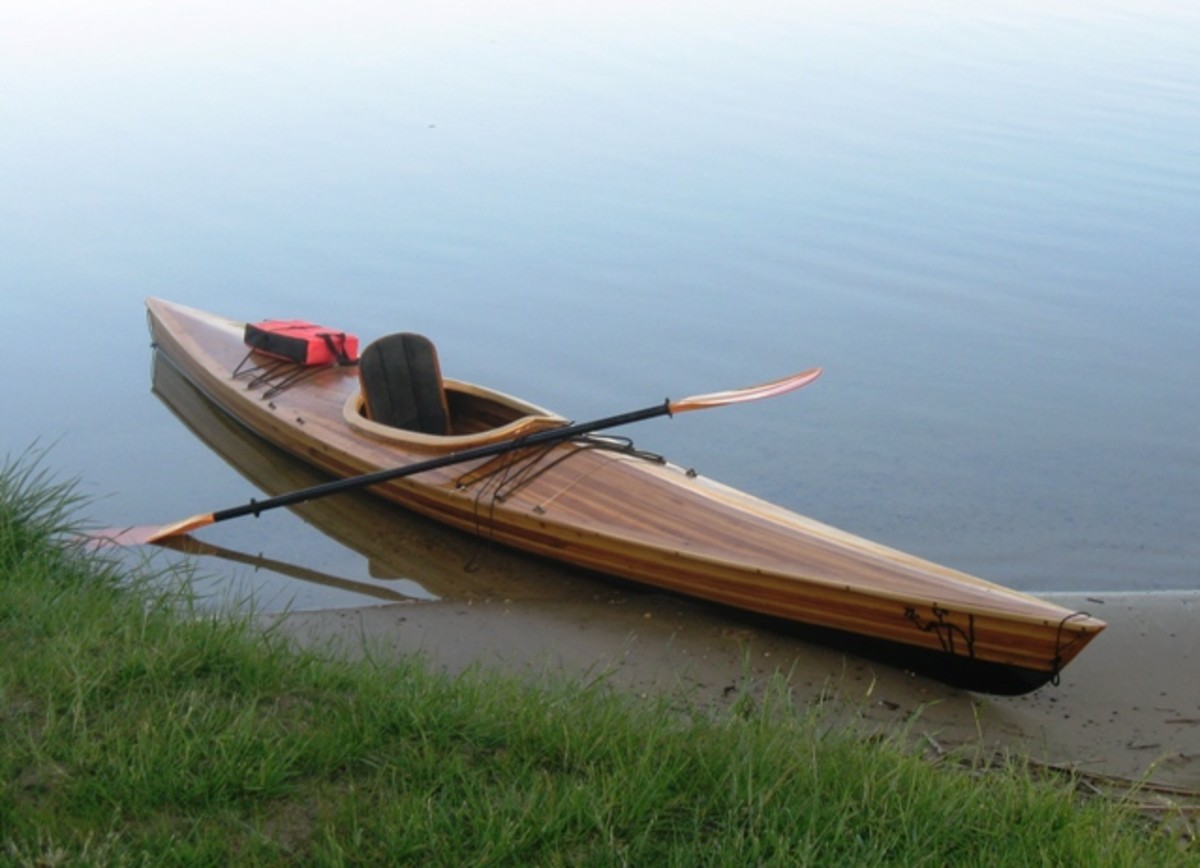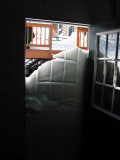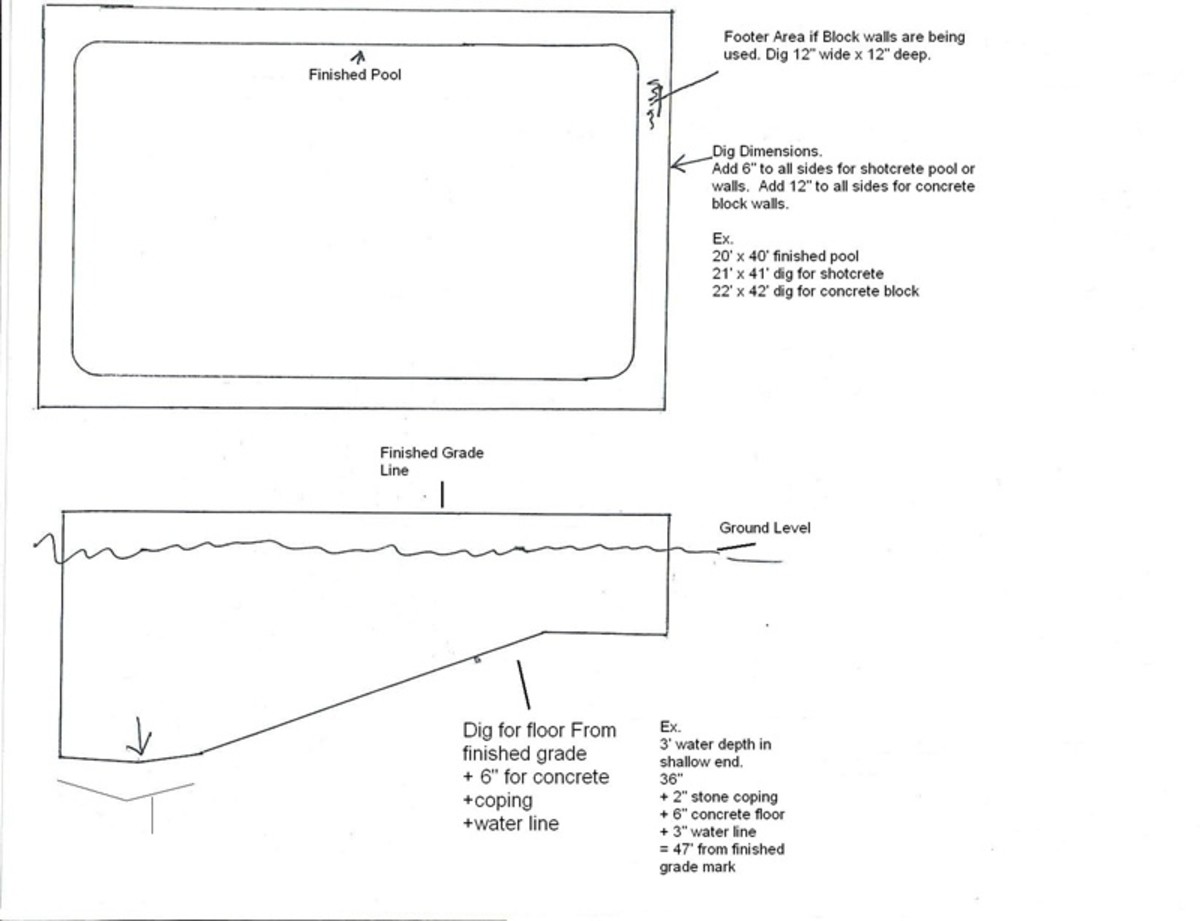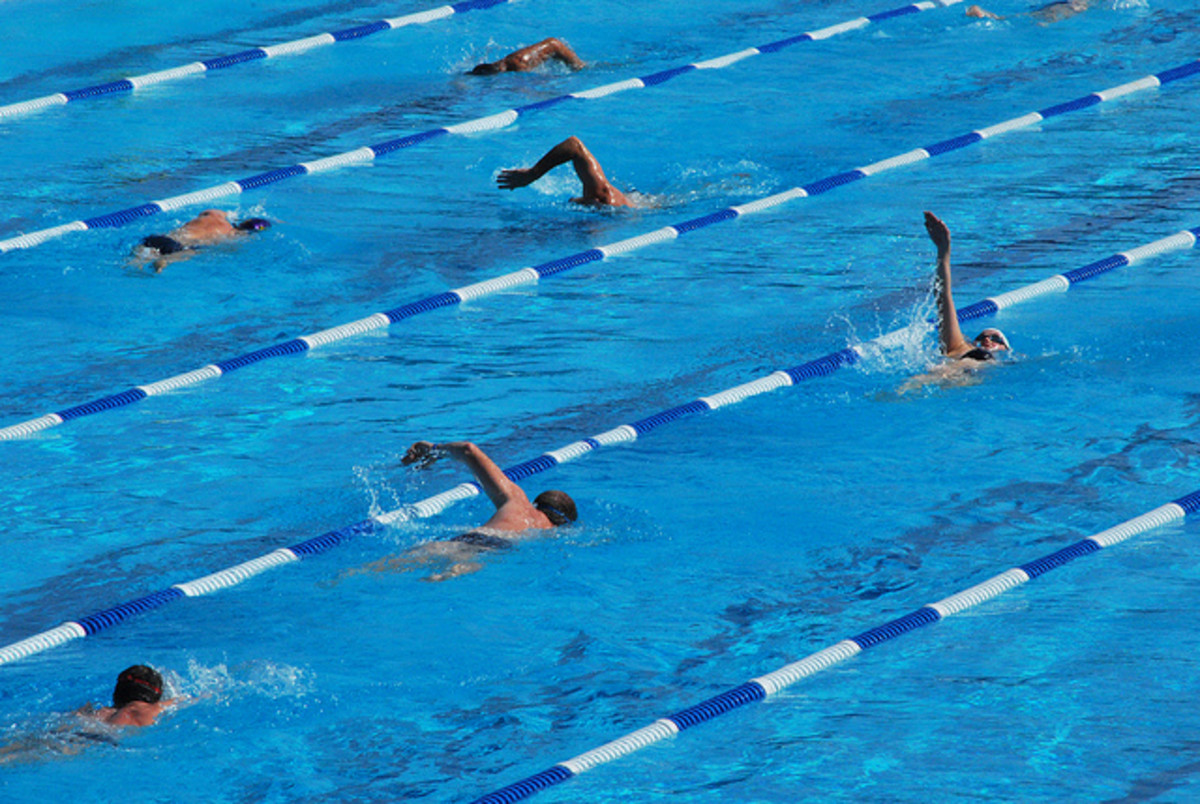Making a Custom Double-Bladed Paddle
Paddling on the Trinity
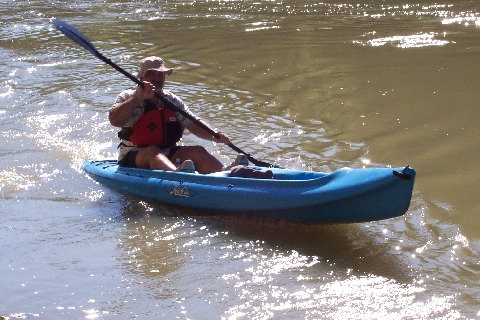
Step by Step Guide
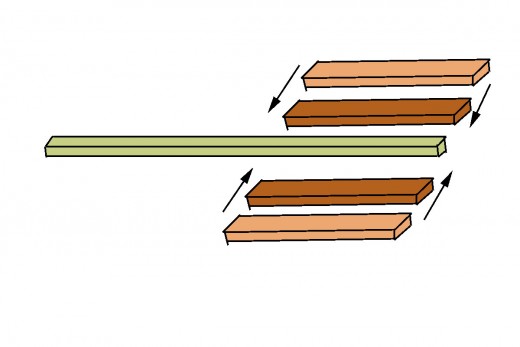
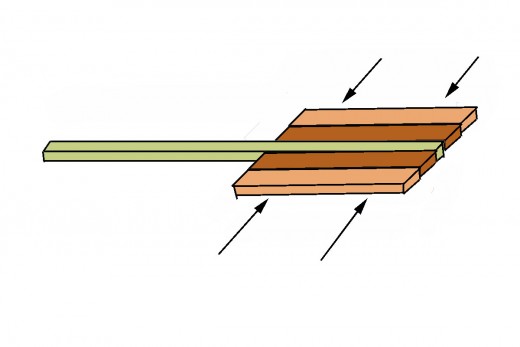
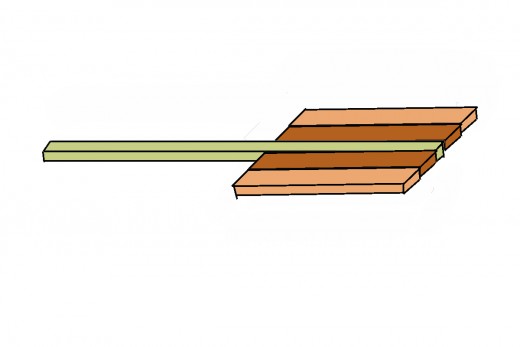
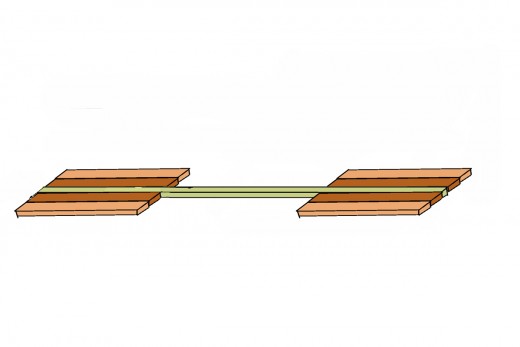
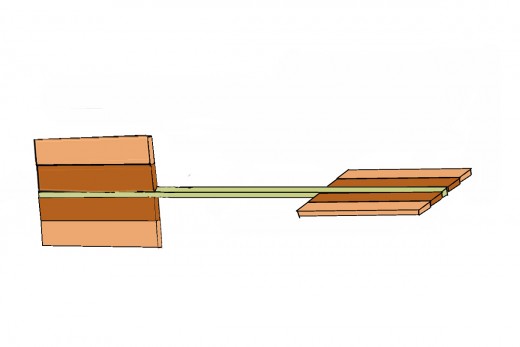
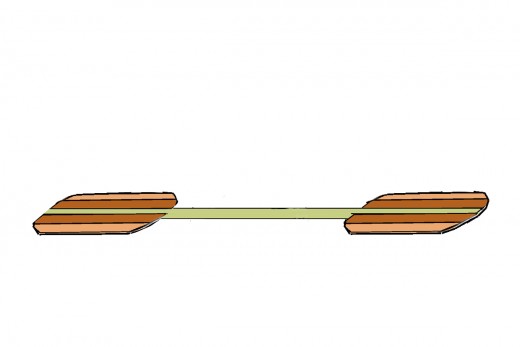
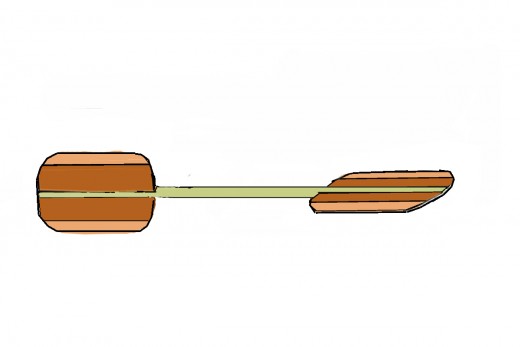
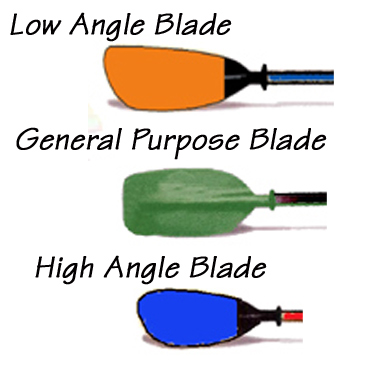
Building the Custom Paddle
Putting together the basic paddle shape is not the hard part of building a custom paddle. The process is relatively simple.
First, cut a 2x2 hardwood board to the length you want your double bladed paddle to be. This will be the shaft of the paddle.
Second, cut inch thick strips of a couple of different kinds of hardwood. The strips can be identical or varying widths depending on the design of the grain you have in mind. It's also good to lay in a couple of strips so the grains are crosswise to the others for addes strenght.. Cut the strips to the length of the paddle blade you want to make and add a couple of inches.
Third, lay out the strips on a flat surface. You may have to put a flat board under them to raise the strips so they strike the center of the (for now) square paddle shaft.
Fourth, Glue the edges and press the strips together to form the blade halves. Glue the blade halves up against the paddle shaft so that the sides of the shaft rise equally above and hang below the blade piece edges. Clamp the blade or wrap it with bungee cords to hold the strips together. Let dry and cure for 24 hours. Be sure and use waterproof glue.
Fifth, do the same on the other end of the paddle. If you plan to make a flat paddle orient the other blade in the same horizontal plane. If you plan to make a feathered blade, turn the blade 90 degrees to the first one. You can also make less steeply angled blades by trimming the end of the shaft at any preferred angle to the first blade - say, 10 to 45 degrees or more.
Sixth, Once the opposite blade is glued together and cured, choose a blade design that suits the way you paddle. If you use a high angle of attack, you'll want a more wide-faced blade, while lower angles of attack will become more elongated to increase width of the blade face you put into the water.
Seventh, once the overall shape is cut out with a band saw or sabre saw, use a rasp to round and shape the shaft. Then sand it smooth. Taper the shaft to the blade at the throat and then use a plane and sander to round the corners and flatten the blade.
Eighth, round the top surface of the shaft in center so that the center of the blade is thicker than the blade. Taper the paddle shaft at the center of the blade so that it's edges blend into the blade. Keep sanding the blade till it is the desired thickness. A too-thick blade will be so heavy it wears you out on a long paddle. A too-thin blade will shatter if it strikes a rock.
Like Goldie of "locks" fame, you're looking for "just right". What that is will be up to you.
Finally, once you've shaped and sanded the blade, stain it if you want to or leave it natural. Apply 2 to 6 thin coats of marine spar varish to the entire panel with a sprayer or camel's hair brush. Sand lightly with wet sand paper between coats.
Paddling Technique Video
© 2010 twayneking

